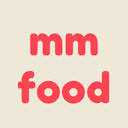Savor Without Stress: Low-Purine Korean Seafood Made Easy
Discover how to enjoy Korean seafood spots on a low-purine diet. Learn safe dish choices and how mm food translates menus and identifies gout-friendly options.
MM Food Team

Dine Confidently Anywhere
Get the MM Food app for instant menu translation and allergy detection.
Savor Without Stress: Low-Purine Korean Seafood Made Easy
Craving Korean seafood but managing gout or high uric acid? You’re not alone. Korean menus brim with tempting dishes like haemul pajeon (seafood pancakes) and nakji bokkeum (spicy stir-fried octopus), but many harbor high-purine ingredients that can trigger flare-ups. With mm food, navigating these murky waters becomes straightforward—translating menus while identifying dishes that align with your low-purine needs.
Why Purine Management Matters at Korean Seafood Spots
Purines, naturally occurring compounds abundant in seafood, break down into uric acid. When your body struggles to eliminate excess uric acid, crystals form in joints—cue painful gout attacks. Korean cuisine’s reliance on anchovy broth, shellfish, and oily fish creates hidden risks. But avoiding seafood entirely isn’t necessary! Smart, app-assisted choices let you indulge safely.
Low-Purine Stars in Korean Seafood Cuisine
These dishes and ingredients are typically safer bets (always confirm via mm food’s AI scan):
- Miyeok Guk (Seaweed Soup): Mineral-rich seaweed is naturally low in purines. Ideal if made without fish stock.
- Grilled Octopus (Nakgui): Lower in purines than crustaceans (like crab) or bivalves (clams/mussels).
- Ojingeo Muchim (Spicy Squid Salad): Squid offers moderate purines—enjoyed sparingly.
- Vegetable-Centric Stews (Jjigae): Opt for soybean paste (doenjang) or kimchi-based versions without seafood broth.
- White Fish (e.g., Cod): Grilled or steamed cod contains fewer purines than mackerel or sardines.
Foods to Sidestep on a Low-Purine Diet
Avoid these high-purine culprits often found in Korean seafood spots:
- ❌ Anchovy Broth: Base for soups, stewos (jjigae), and sauces.
- ❌ Dried/Raw Shellfish: Shrimp, crabs, clams, oysters.
- ❌ Roe and Fish Eggs: Common in squid dishes or bibimbap.
- ❌ Fried Seafood Pajeon: Batter absorbs oils and purine-rich broth.
How mm food Lets You Dine Confidently
- Set Your Profile: Choose "Low Purine" or add custom restrictions (e.g., "no shellfish") in the app.
- Scan or Upload the Menu: Use your phone to translate Korean text instantly and detect dishes.
- Get Real-Time Recommendations: mm food analyzes ingredients, flagging safe options like:
- Green-checked dishes (e.g., grilled squid with veggies).
- Modifiable meals (e.g., "request broth substitute" advice).
- Ask Waitstaff Precisely: Show translated requests: "Please omit dried shrimp" or "No anchovy stock."
Embrace Flavor Without Fear
Knowledge is your best defense. With mm food, demystify menus, avoid purine pitfalls, and savor Korea’s vibrant seafood tradition—gout-friendly. Customize choices, track ingredients, and dine out with ease.
Your Next Step: Download mm food, scan that seafood menu, and reclaim culinary freedom.

Dine Confidently Anywhere
Get the MM Food app for instant menu translation and allergy detection.